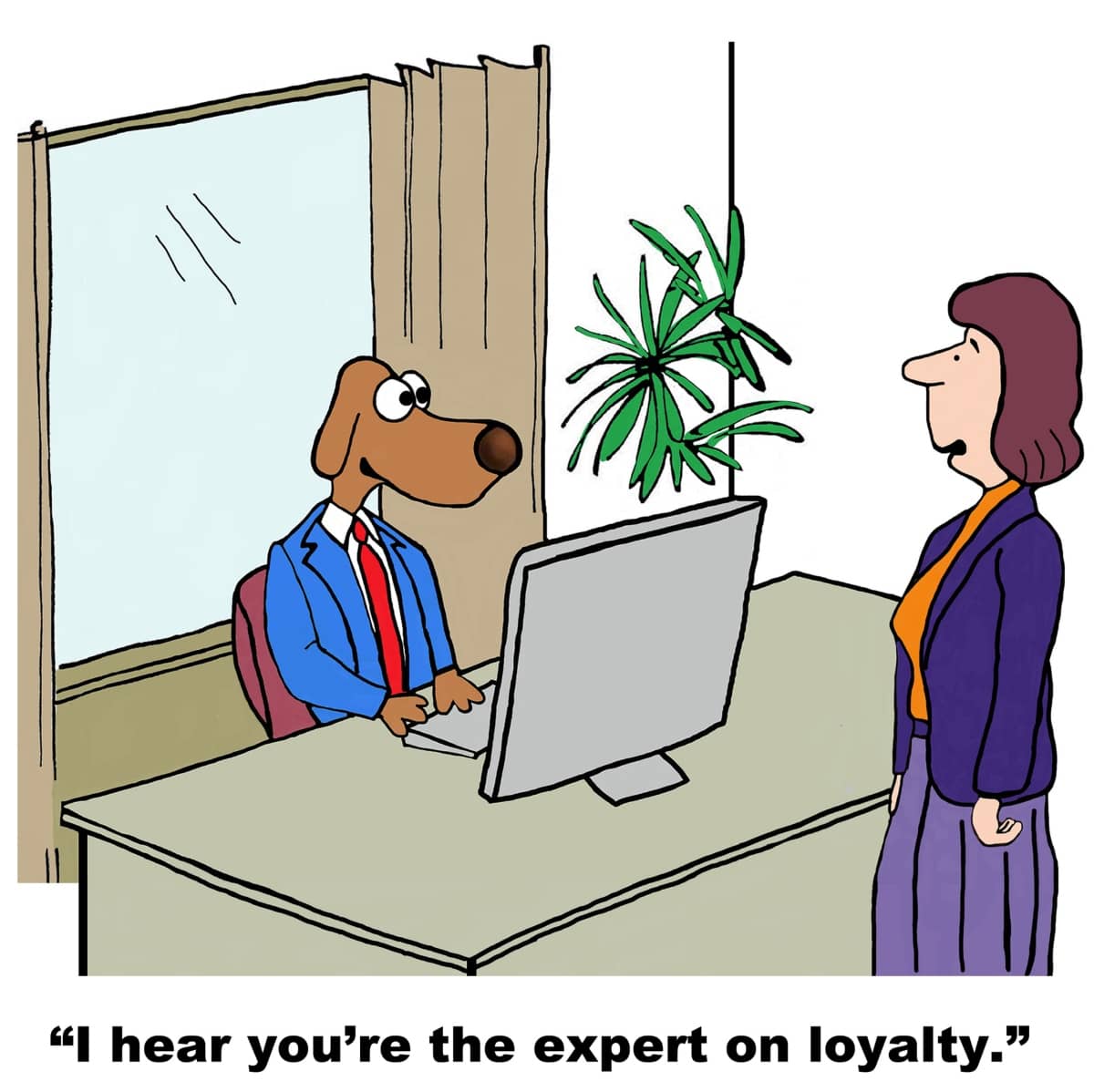How to Create a Marketing Funnel in 2025 (Tips for Each Stage!)
As a marketer, it’s essential that you know how to create a marketing funnel that turns web visitors into buying customers.
A structured inbound marketing campaign can boost your business to greatness and make the sales team happy.
Want to learn how?
This post will lay the foundation for creating a powerful content marketing funnel that will kickstart brand awareness, collect contact details, and sell your product.
Let’s get started!
What Is a Marketing Funnel?
Think of taking a potential customer on a wonderful journey they will never forget.
Okay, that may sound a little over-romanticized, but hopefully, you get the point.
The overall shopping experience changed dramatically with the introduction of the World Wide Web.
However, what hasn’t changed is guiding a prospective customer through a marketing funnel — or a purchase funnel as it was called back in the early 1900s.
All aimed at turning a stranger into an existing customer.
The only difference is that it’s now a digital marketing funnel.
A well-designed customer journey sales funnel has three distinctive stages; top, middle, and bottom and all stages require their own marketing plan.
TOP — Awareness stage
The top of the funnel is all about bringing your business, service, or product to the attention of your target audience. Here’s where you build your brand awareness.
And if you know anything about making an excellent first impression, you also know the importance of this stage.
MIDDLE — Consideration stage
Here, the pampering progresses.
Some may stay here for quite some time, so make sure to provide value and consciously work on gaining their trust. Emphasize why they should choose your product or service.
The middle part aims at collecting an email address.
BOTTOM — Decision stage
In this final stage, all you want is for the lead to pull the trigger and purchase your product. Make it so compelling that they can’t resist.
The average time people spend on a webpage dropped to under a minute, so unless you offer a solid gold bar for pennies, it’s unlikely a prospect converts into a new customer within a minute.
That’s where an effective marketing funnel comes to the rescue. You still won’t clock that minute, but the funnel will keep ‘em in the loop. Your loop.
Tactics for Each Stage of the Marketing Funnel
Top of the Funnel (TOFU)
In this stage, it’s not yet about selling your audience on a product or service.
The goal in this awareness stage is to pique interest and answer possible questions they may have.

When you see a business or product hype, often, the buzz is created in the TOFU.
Even though it’s not the stage where your sales explode, it is the stage where you can lay the foundation for conversion success.
Tip: stay away from pressuring people and refrain from trying to sell your product or service. The TOFU is not yet the place to do so.
TOFU content
Content in the TOFU is about educating and entertaining your visitors, creating that hype.
Topics can be broad but must be related to your business or product.
You may highly entertain by sharing the ins and outs of the upcoming Formula 1 race, but what’s the point if you're selling dog beds?
Aim for giving free value from easily accessible sources, such as blog posts, videos, social media content, or even podcasts.
Summarized, TOFU content must be:
- Free
- Educational
- Related
Include a little competitor research; what can you learn from their landing page and social media content?
TOFU marketing tactics
This awareness stage is all about attracting more visitors to your website. Let’s look at some effective tactics that can bring you the traffic you need.
1. Direct email
Direct email is targeted, cost-effective, easily measured, and has a proven track record for success. Hence why it’s one of the most used marketing tactics.
2. Social media

Social media is a hot and powerful lead magnet for boosting social engagement.
Take Instagram, for example. Make your brand Insta-famous and watch those leads fly in like a torpedo!
Sprout Social is a helpful tool for efficient social media marketing.
3. SEO
Create a solid SEO marketing strategy and optimize your content for first-class ranking, above your direct competitors.
4. PR
Make friends with journalists, reporters, and influencers and set your brand in the spotlight! Create the perfect pitch and get your newsworthy content featured in popular media outlets.
5. Paid advertising
When you have the budget, consider launching some paid ads. An Adwords Campaign or launching social media ads is a great start.
When done correctly, it can bring in loads of new leads.
Marketing strategy expert Neil Patel has a great beginner's guide on Google Adwords.
6. Influencers
Do you regularly see Instagrammers or Pinterest people promoting a product?
Quite likely, those social media accounts have a huge following.
Influencer marketing can seriously skyrocket your brand or product.
Carefully pick a social media following that’s already interested in your product or service, or else your hard-earned money will find its way down the drain.
Measure TOFU marketing
To measure the TOFU process, there are some essential metrics for you to keep an eye on;
- Sessions (AKA visits)
- % new sessions
- Traffic per marketing channel
- Bounce rate
Middle of the funnel (MOFU)
This is the consideration stage. They are now more familiar with your product but still on the fence of consideration, awaiting more detailed info.

This stage aims to lock in their contact information and grow your email list.
And the more value you provide, the more they’ll be willing to opt-in.
MOFU content
Whatever you offer here, make sure it’s free. This is where you’ll want to expand your blossoming relationship and collect their details.
And why would someone pay you in exchange for giving you their email address?
Offer “premium” content that supplements the TOFU content but only makes it accessible after leaving their details.
Options include:
- E-book
- Webinar
- Mini-course
- Case-study
Fill these up with valuable information, hook readers with a little teaser, and you’ll have excellent lead magnets that won’t cost much to create.
MOFU marketing tactics
1. Popups/Forms
Popups asking for your email are common practice. Be careful; aggressively throwing it in your lead’s face the second they land on your page may backfire.
A popup or form is hugely effective when cautiously designed and placed — not hurting the user experience. Provided there’s exchange material, of course. Humans love freebies!
Check out Sumo, which is a free email marketing tool. Another (paid) option is Sleeknote.
2. Email Marketing
Easy to share, global reach, deliver targeted messages, drive action, drive revenue — are but a few of the email marketing benefits.
If you already have an email marketing strategy, see if you can fine-tune it for this middle stage of the email marketing funnel.
When you’re a newbie: start small with only a few campaigns.
For example, a welcome email and a weekly newsletter. And nail the content, of course, you want them to be opened and read!
3. Remarketing
Ever wondered why the new vacuum cleaner you just checked out doesn’t seem to wanna leave you and keeps stalking you all over the internet?
That’s remarketing, or retargeting, in full swing.
Google Adwords and Facebook offer retargeting pixels (small pieces of code) you can add to your website for the same effect you experienced with the vacuum cleaner.
It’s a somewhat advanced marketing effort, but worth diving into. Neil Patel made a great retargeting beginner’s video.
4. Trials and demos
Here comes the freebie again!
Offering a free trial or giving away a free sample can boost sales in the end stage, and it will assist in building your email list.
They’re still in the consideration stage, so give them something valuable to consider!
This tactic is particularly beneficial when offering digital products, such as online courses or a membership program.
There’s no risk involved for the prospect, and most people will be happy to exchange their email addresses for your free goodie.
5. Private communities
Keep your hard-earned leads and existing customers engaged and in the loop by creating an open and ongoing communication channel. This can be done by setting up private communities.
You can offer exclusive discount codes to make them feel seen, heard, and appreciated.
It will increase customer retention and your brand may even become the customer’s identity.
Measure MOFU marketing
These are the essential metrics for this funnel stage:
- Email open and click rates
- Number of new leads
- Emil list growth
Bottom of the funnel (BOFU)
Your leads now flow from the consideration stage into the decision stage.

They are down to the climax of their journey: purchase your product, sign up for your program, or whatever else you are happy to exchange for their credit card details.
At this stage, you want them to take action and make that sale!
BOFU content
Your prospects are now fully informed and ready to make a decision. You must nail the BOFU content to help them get off the decision fence and tackle their remaining shilly-shallying.
Bottom-funnel leads should be guided towards, for example, a slick landing page where perhaps some five-star testimonials and a rocking CTA are waiting to swiftly push their purchase decision.
BOFU marketing tactics
1. Scarcity
We all want what we can’t have, right?
Creating scarcity is a widely used marketing tactic, and it means you increase the value of your product by limiting the supply.
Okay, spill the beans here; even you must have purchased something in the past simply because they were the ‘last available’ items?
There you go.
2. Upsells
Upselling is a common marketing method to increase your revenue. It’s the tactic of encouraging buyers to purchase a higher-end product.
Usually offered at, or directly after, checkout.
Make it an offer they simply can’t refuse. Throw in scarcity as an extra, and you can even monetize any potential FOMO.

Upselling notably increases your average order value (AOV) and overall revenue.
3. Bundles
Product bundling is a clever marketing technique, potentially skyrocketing your sales.
Here’s the strategy: bundle items together and offer them at a discounted price. This sale works best when the various items complement each other.
Bundling is a win-win; more value for money for your customer, and more money for you.
Everyone happy!
Measure BOFU marketing
And — you guessed it — here are the metrics to look for in this stage of the funnel:
- Number of new customers
- Conversion rate
- Revenue per acquired customer
- Total revenue
How to Create Your Powerful Marketing Funnel
Your digital marketing funnel is the gateway to a consistent flow of leads. By now, you know all about TOFU, MOFU, BOFU, and the various tactics.
Time to get into the how!
1. Know your target audience for each stage
A buyer persona is where it all starts for getting to know your target audience.
If you don’t know who you are targeting, how will you know who is willing to pay for your product or service?
Listen to existing customers’ feedback, send out surveys, understand their interactions with your website and web content, and analyze web data.
These are but a few of the ways to understand your target customers. You can also conduct a more thorough customer behavior analysis.
When you have a clear idea of who you want to target, you can better shape your funnel and zoom in on their problems and needs.
2. Establish goals for each funnel stage
Apart from your overall marketing end goal, you must also establish your goals for each individual funnel stage.
To recap: a content marketing funnel has three separate stages: top, middle, and bottom. Establish clear goals for each of those stages.
For example, at the top, you want to increase website traffic. A goal for the middle could be to boost digital engagement. At the bottom, you want conversions to shoot up.
Tracking progress is essential and can only be done when you know what you want from each stage.
3. Decide which stage you’re ready to start at
This may sound counterproductive because you always start at the top, right?

However, not every business is in the beginning stage of its existence.
Maybe you already have a steady flow of re-ordering customers, in which case you should start your focus on the bottom of the sales funnel and then work upwards.
When you’re a start-up or have a relatively small business, your first priority is to direct traffic to your website.
In this case, the focus point should be the top of the funnel.
Bottom line, focus on the stage that matches the stage your business is at.
4. Choose a couple of tactics for each marketing funnel stage
Even though we provided 10+ tactics, we don’t recommend you use them simultaneously.
Just focus on implementing only a couple of the tactics and master those, rather than trying to cram ‘em all in, half-decent.
When you’re not yet a marketing pro, start with the relatively easy tactics to carry out. Below you’ll find some popular strategies for each funnel stage.
Top:
- Social media posts
- Influencer marketing
- Blog posts
Middle:
- Product reviews
- Unboxing videos
- E-books
Bottom:
- Offers and discounts
- Free trials
- Create scarcity
5. Create content for each stage of your marketing funnel
Time to fill the funnel!

Start creating the content you feel resonates best with your target audience. Is it social media, blog posts, videos, or maybe podcasts?
And don’t feel like you need to craft twelve-month content in one go.
Save yourself time and energy, and just focus on the content that will get your sales funnel going.
Keep tracking results and adapt where needed. There’s no point in repeating content that lacks engagement in every way.
6. Set up your email sequence
Automatically sending out a series of emails to a prospect or customer is called an email sequence.
The messages are sent in a predetermined order using marketing automation, and ideally, the following email builds on the previous one.
The goal is to nurture and gently direct the reader toward the bottom of the content funnel.
For example, your first email is a warm welcome. The second can include a lead magnet such as a free product sample or a business incentive. Your third email highlights your offer. Then, your fourth can include a case study with the benefits of what you’re offering.
And so forth.
Hubspot has a great article (+ examples) about the email sequence.
7. Focus on continuity
You determined your goals, picked your tactics and created content. Now, make sure you connect the dots!
Or, in this case, connect the stages.
Point your focus on the continuity of the customer journey and bridge the various tactics. It will keep the leads on board.
For example: suppose you offer prospects a free webinar to secure email details. You connect the stages by placing a call-to-action in an Instagram or blog post (tactic #1) for that webinar (tactic #2).
8. Retain customers and grow your brand
A long-term relationship with loyal customers can drive your business to great heights.

Here are some customer retention strategies:
- Next-selling — following up after a purchase with an exclusive offer.
- Cross-selling — show ‘people also viewed’ products or offer complimentary items to add to their cart.
- Upselling — show higher-priced alternative items.
- Loyalty program — provided it’s well-designed and well-executed.
- Product updates — free software updates and changes to fix a problem or satisfy a need.
- Discounts — highly effective, but be aware not to devaluate your product by pricing too low.
9. Track the success of your marketing funnel
Keeping track of your marketing funnel’s performance is crucial. Funnel analysis tracks the lead’s journey all the way from their first visit to the bottom of the funnel.
It shows you:
- How many leads make it through the different stages
- Number of conversions
- Number of daily opt-ins
Making a detailed sales funnel analysis and continuously monitoring the results, is crucial.
The sooner you detect it’s underperforming, the sooner you can twist and turn some of the buttons and optimize the funnel journey.
Google Analytics is a handy tool to track where and when leads either abort mission or make a purchase.
Ready to Build Your Funnel?
Tofu Mofu Bofu almost sounds like a tasty oriental dish, right?
Hopefully, we’ve taken out the gobbledygook and clarified the architecture needed to successfully create your own digital marketing funnel.
Now that you have a solid grasp of the customer journey essentials, you are ready to take action.
Determine your end goal, create the framework for your sales funnel, and let the buyer’s journey begin!
Loes Kotoun is an elated Smart Blogger Certified Content Marketing writer on a mission to make her writing the answer to your content prayers. She sprinkles fairy dust over SEO-friendly words so your business can set foot in the spotlight. Connect with her on LinkedIn or visit her writer profile.